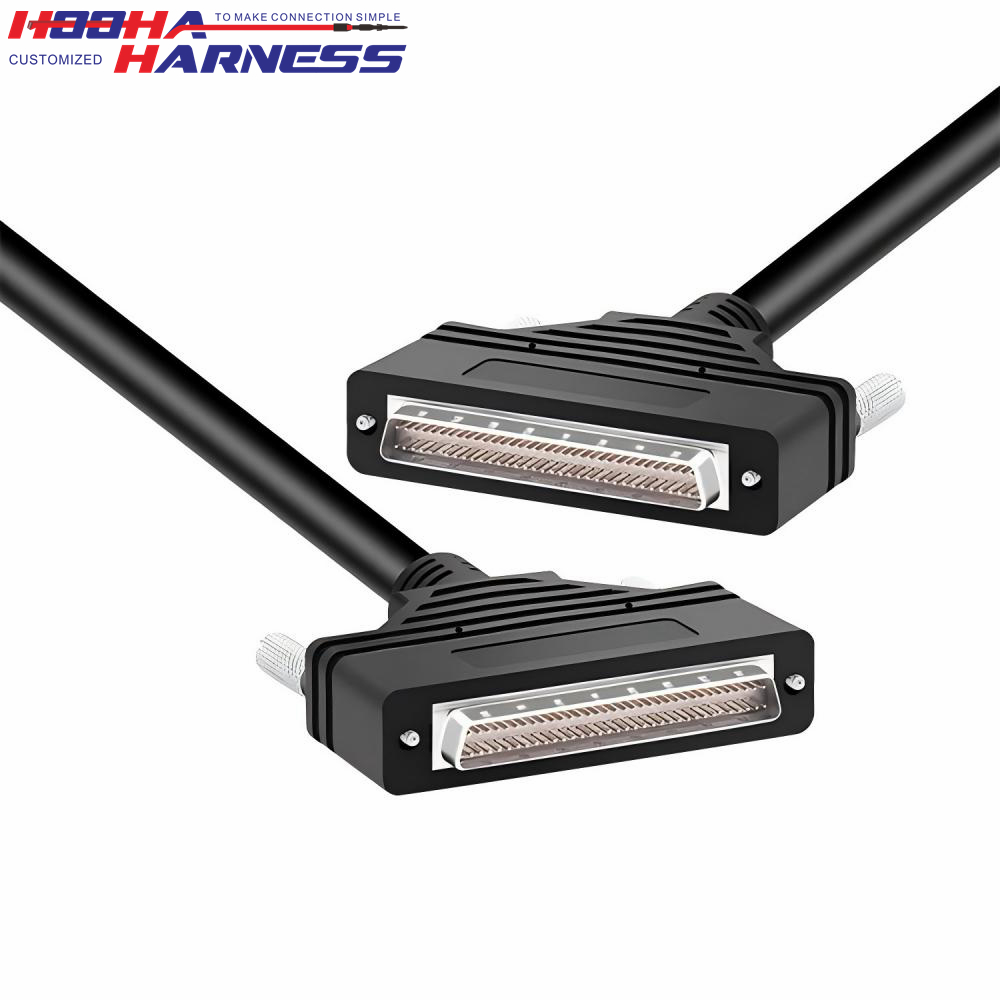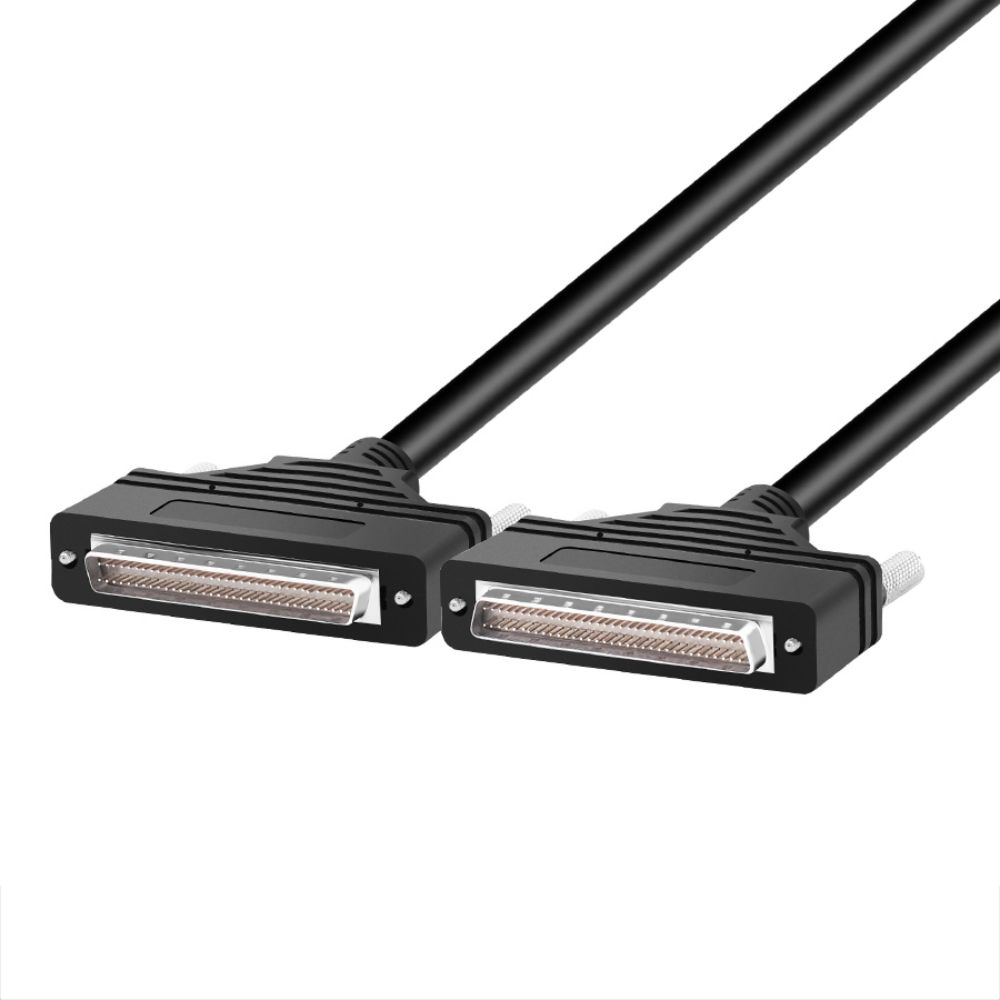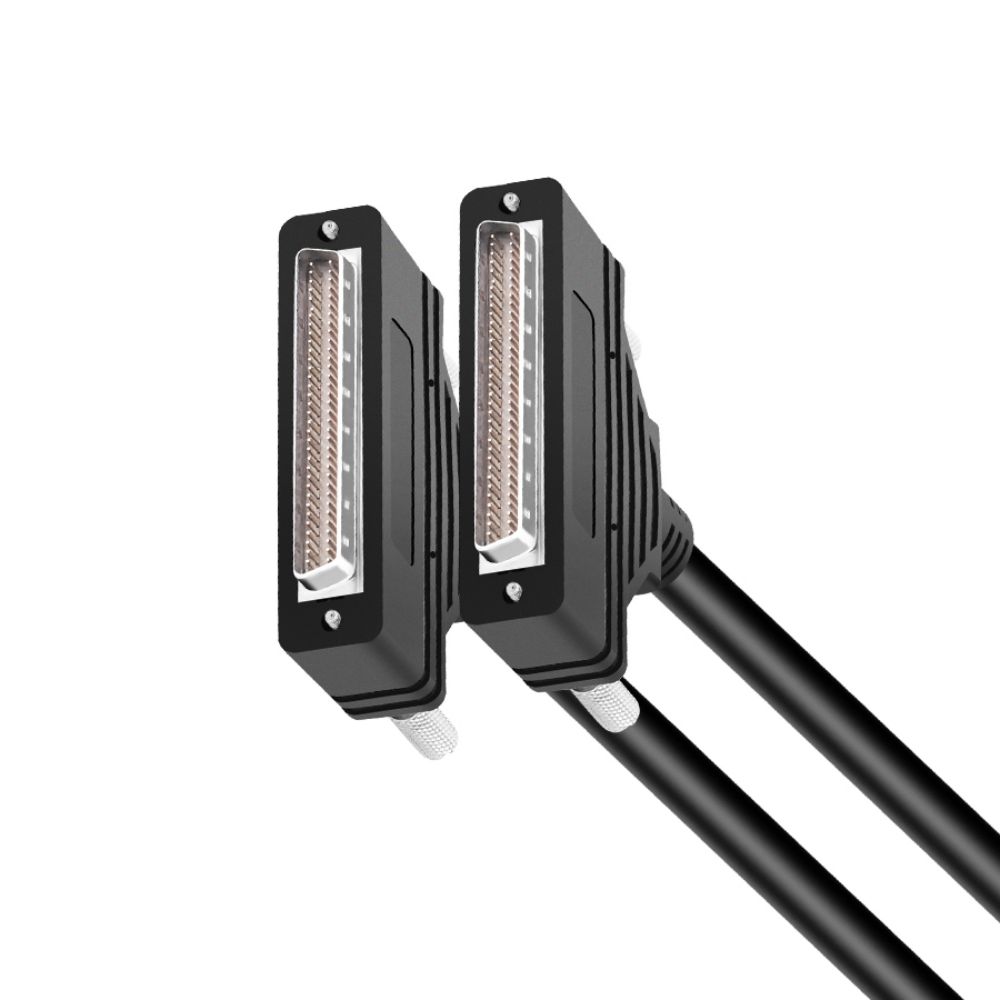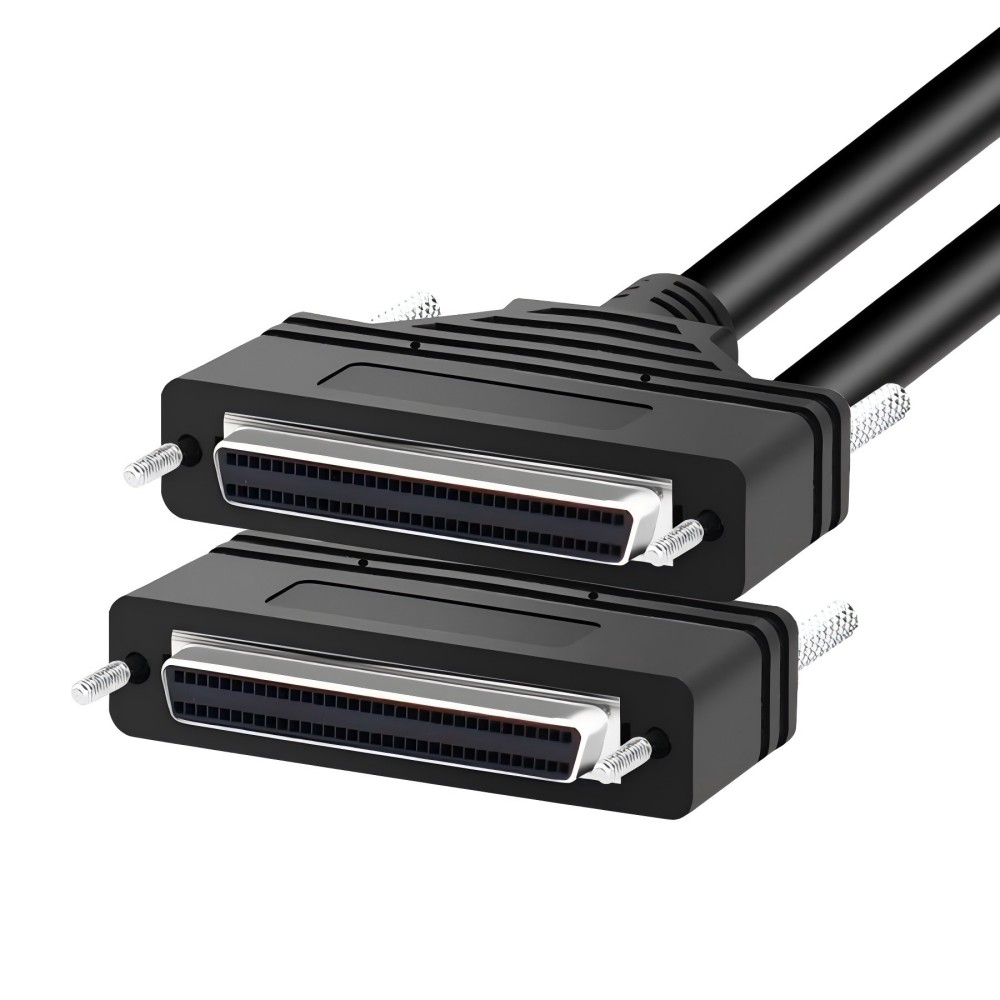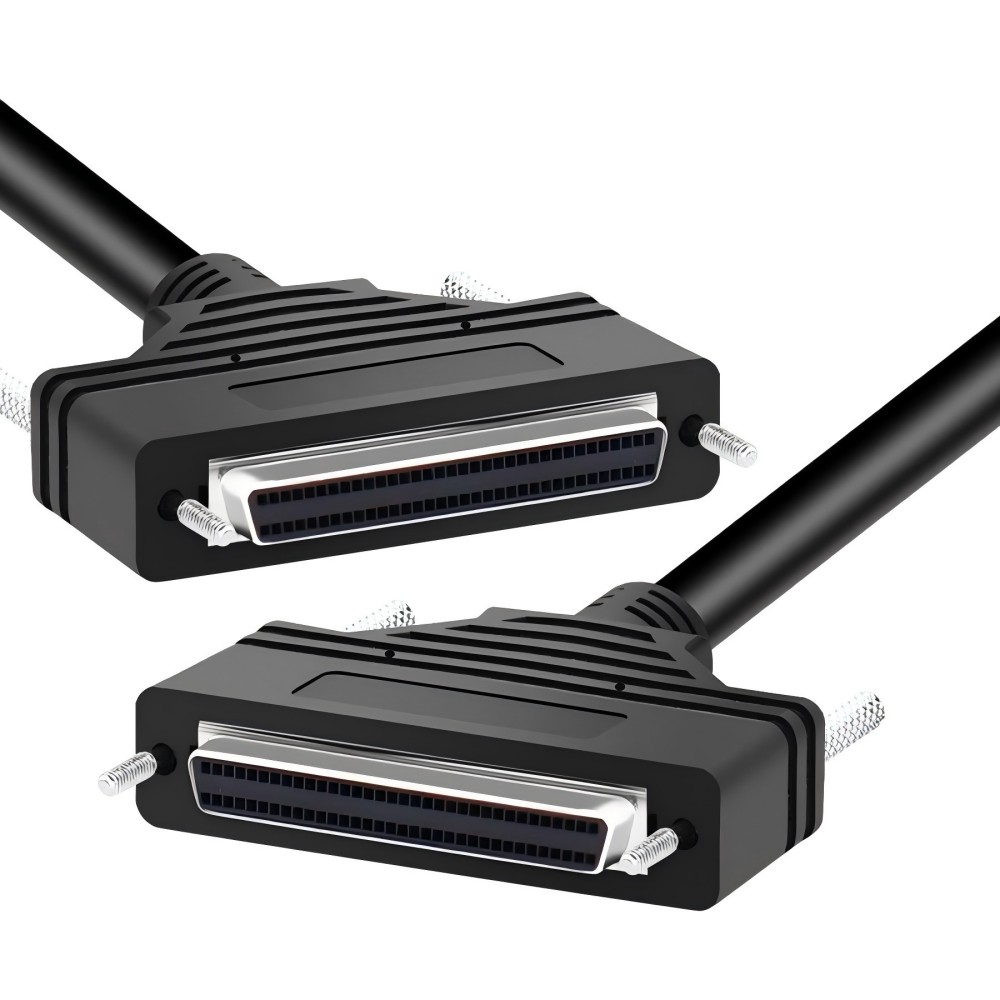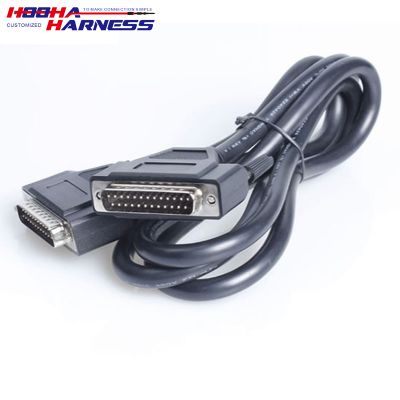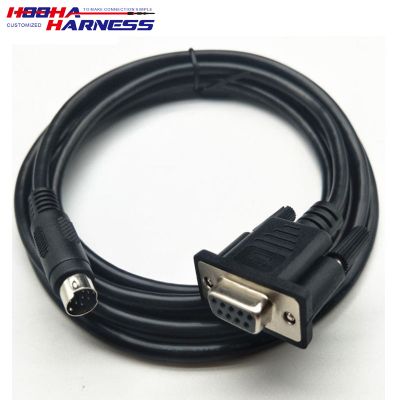PRODUCT
SCSI cable HPDB68 Industrial Equipment control cable
- Support length: 1.5m, 5m, 3m, 2m, 1m
- Connector type: DB68 male and female
- Cable: 68 core 28AWG wire PVC jacket with an aluminum foil shield
- Wire conductor: pure copper
- Output type: male to male, male to female, female to female, male to open end, female to open end.
- Application: computer single transfer
This SCSI cable is available in various lengths including 1.5m, 5m, 3m, 2m, and 1m. The cable features a DB68 male and female connector type with a PVC jacket and aluminum foil shield containing pure copper wire conductors. It comes in different output types such as male to male, male to female, female to female, male to open end, and female to open end. This cable is suitable for a computer single transfer.
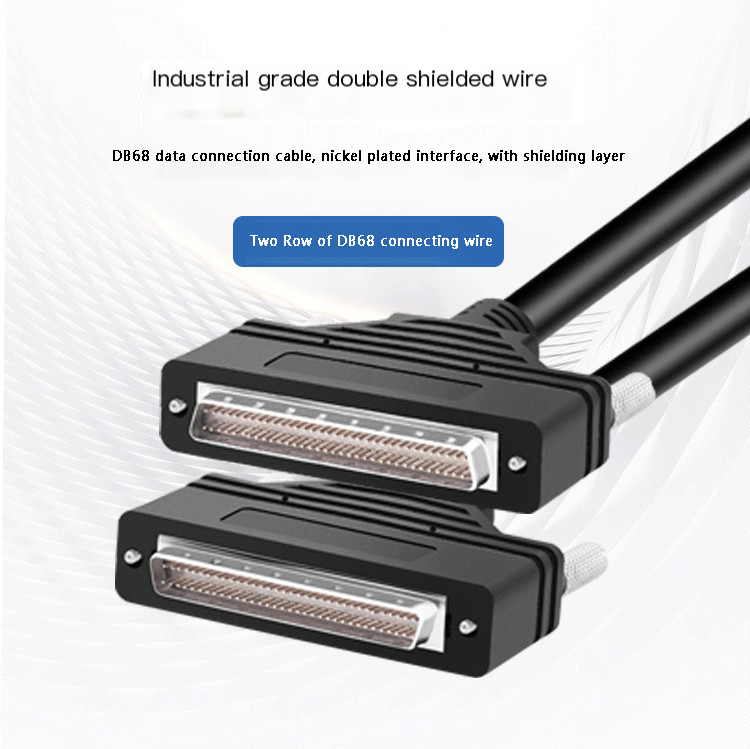
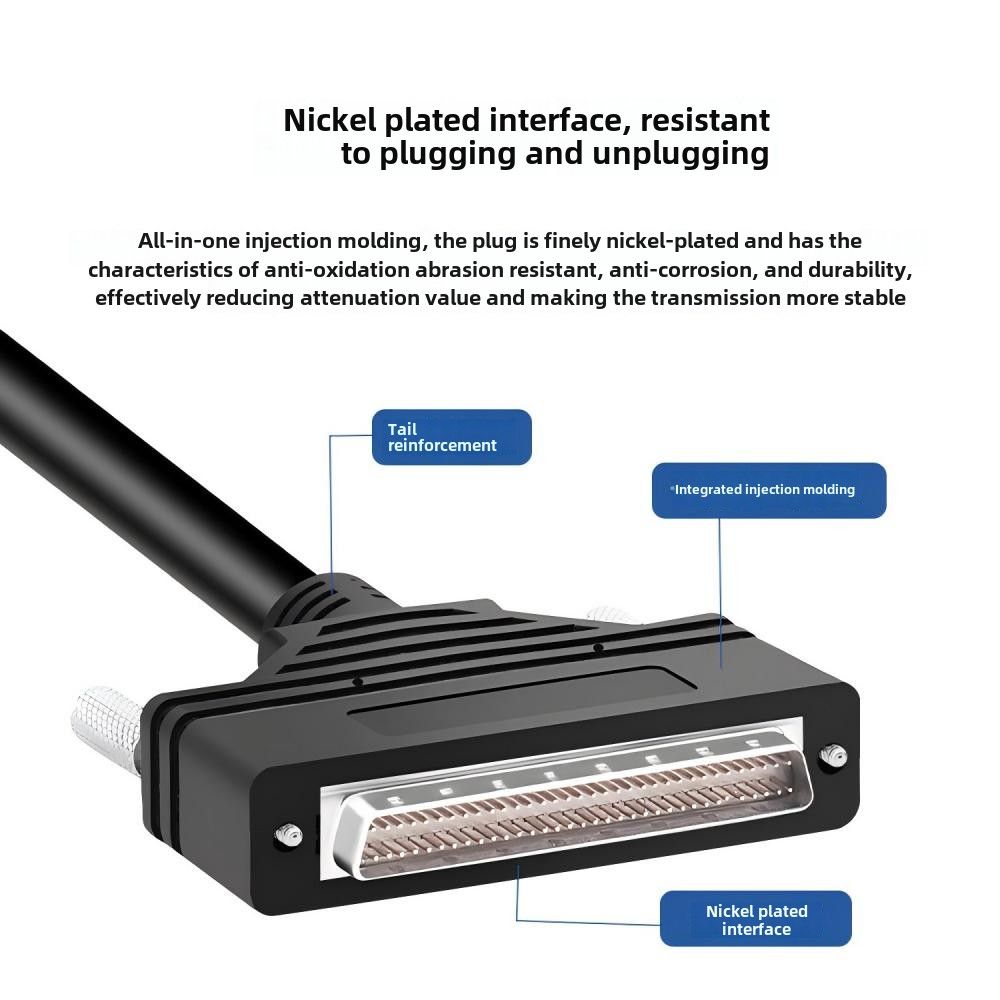
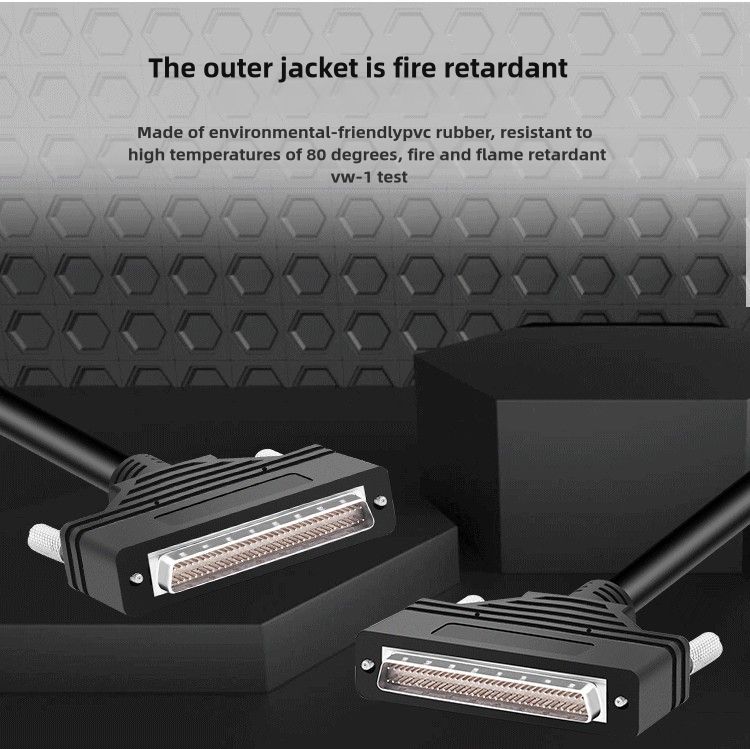
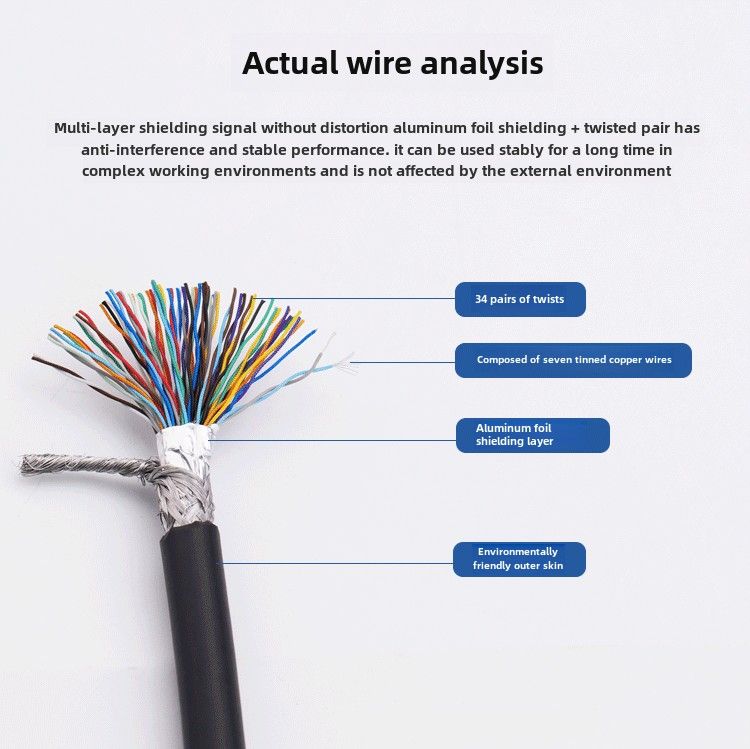
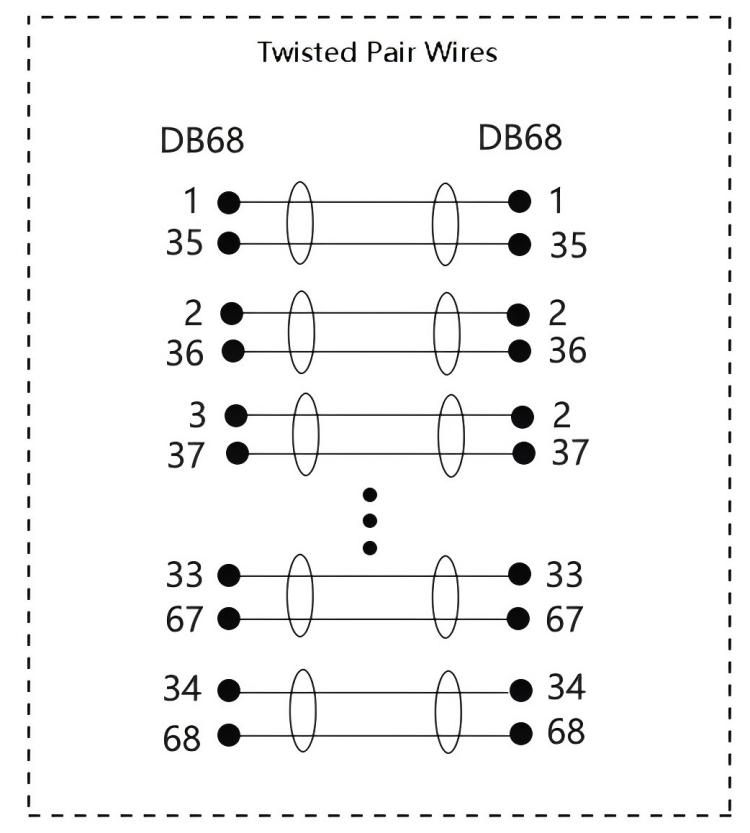
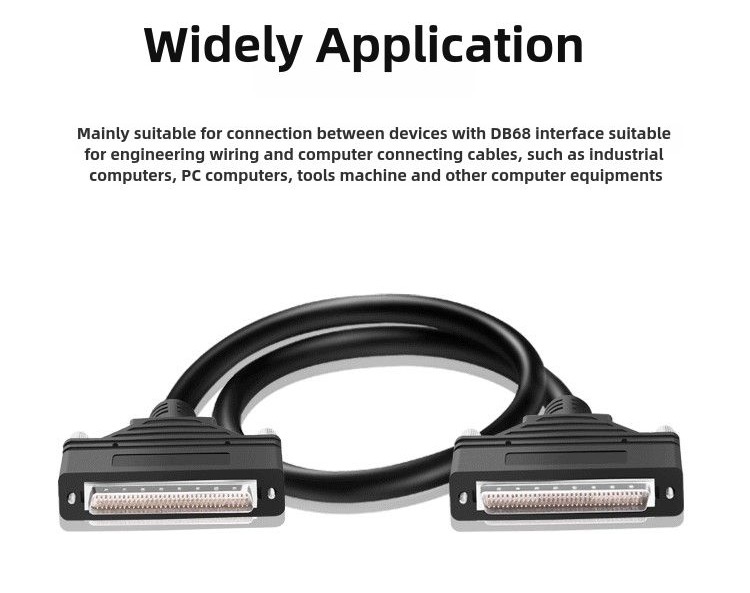
CNC Machines:
Used to connect the central controller to various peripherals and sensors within CNC (Computer Numerical Control) machines, ensuring precise data transmission for controlling machine operations.
Robotic Arms:
Facilitates communication between the main control unit and the motors or sensors in robotic arms, enabling accurate movement and feedback.
Industrial Automation Systems:
Connects programmable logic controllers (PLCs) to input/output modules, allowing for reliable data transfer in automated production lines.
Factory Automation:
Used in factory settings to link control systems with various automated devices, ensuring synchronized operations across the production floor.
Test and Measurement Equipment:
Connects sensors and other data acquisition devices to computers or data loggers, allowing for accurate monitoring and analysis in industrial testing environments.
Legacy Equipment Integration:
Provides compatibility with older industrial systems that still use SCSI interfaces, allowing for the integration of modern control systems with legacy equipment.
Data Storage Systems:
Connects industrial-grade data storage devices to control systems, ensuring high-speed data access and storage in environments where reliability is critical
Medical Imaging Equipment:
Connects critical components in medical imaging systems, such as MRI and CT scanners, where precise data transmission is essential for accurate imaging results.
Automated Test Equipment (ATE):
Used in the semiconductor and electronics manufacturing industries to connect ATE systems with various test modules, ensuring precise and reliable testing of electronic components.
Environmental Monitoring Systems:
Links sensors and data loggers in environmental monitoring setups, allowing for continuous data collection and analysis in applications like air quality monitoring and industrial emissions control.
Industrial Printers:
Connects the main control board to various subsystems in large-scale industrial printers, ensuring synchronized operation for high-quality printing in manufacturing environments.
Telecommunications Equipment:
Used in telecom infrastructure to connect control systems with communication modules, ensuring robust and high-speed data transfer in network operations centers.
Energy Management Systems:
Facilitates communication between control units and monitoring devices in power plants or renewable energy installations, ensuring efficient energy distribution and management.
Assembly Line Equipment:
Links various components of automated assembly lines, such as conveyor systems, robotic arms, and sensors, to the central control unit, ensuring smooth and synchronized production operations.
Industrial Robots:
Interfaces with control systems to manage the operations of industrial robots used in assembly, welding, painting, and other automated tasks, ensuring precision and reliability.
Process Control Systems:
Used in industries like chemical processing, oil and gas, and pharmaceuticals to connect control systems with sensors, actuators, and other field devices, ensuring accurate process monitoring and cont
